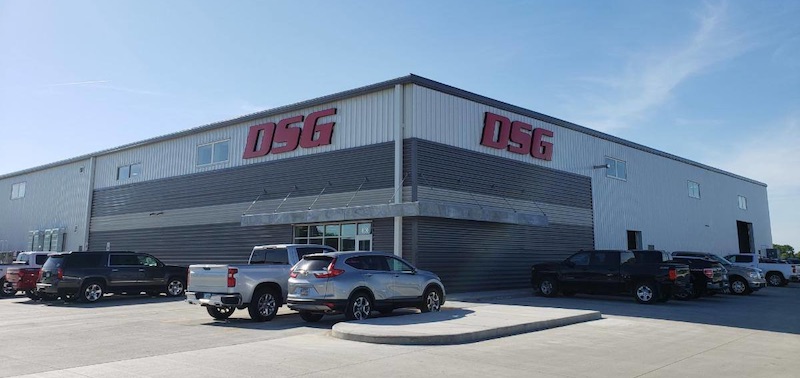Agile manufacturing is a well-understood concept that allows companies to compete more efficiently by adapting quickly to changing customer and market needs. Just as you have to compartmentalize and adapt production processes for agile manufacturing, distributors can create a compartmentalized sales infrastructure that adapts to changing demands.
When you consider how complex and fragmented industries such as manufacturing and construction tend to be, developing an agile sales infrastructure can be quite a challenge. To remain agile, distributors have to break down the sales process into core components and apply standardized approaches that can be effectively commercialized market-wide.
There are different ways to implement an agile sales strategy, but the basic characteristics of agile sales include being able to make decisions regarding managing costs, innovation and sales strategy in a manner that gives you both speed and flexibility. Restructuring sales to instill agility is your best strategy to capture new revenue from time-sensitive growth areas.
Agile sales in action
To demonstrate what we mean by sales agility, let’s consider the case of an electrical tools and components maker that was having difficulties differentiating its products.
This manufacturer was having difficulty penetrating all vertical markets and end-use customers where their competitors were well entrenched. Some of their products had become increasingly commoditized, making it difficult to differentiate and build sales, while others were highly technical in nature. Some products were sold for OEM applications and others were sold through distribution. The wide variety of products, applications, vertical markets and distribution channels became overwhelming to the direct sales team. They could not successfully work with all distributor partners and end users, identify all of the vertical market applications, and determine the unique differentiating factors about every product from their competitors.
To address the problem, the company restructured its sales infrastructure.
Also see: “Keys to Adopting a Customer-Centric Distribution Sales Strategy.”
To provide the agility needed to build sales, the company created channel-focused sales and marketing teams. Each team was responsible for developing customer solutions and sales strategies that targeted different channels. Then they redeployed their best technical reps into their more technical customers and hired a nationwide manufacturers’ rep agency to handle the other vertical market applications and build the distribution base.
The new structure focused their internal sales team on their highest value target markets and simultaneously expanded coverage with the manufacturers’ rep agency, resulting in the rapid growth they were seeking.
Identify the components of agile selling
Before you can create an agile sales infrastructure, reassess your business, uncover gaps, and identify areas you can strengthen to create new sales opportunities. One of the easiest ways to gain a holistic view of your business is to break your sales operations into their basic components so you can arrange the pieces as needed to take advantage of new opportunities.
First, break down the components of your go-to-market strategy:
- Define customer segments – Break down your target customers into unique market segments. Create a profile of your ideal customer to help you prioritize customer segments and determine where to focus sales efforts.
- Identify value propositions – Outline customer needs based on the unique customer segments. How does your offering map to those needs and where do you deliver differentiated value?
- Profile customer relationships – In addition to identifying the value proposition for the product, define the value proposition for the customer relationship. Where do you bring value to the relationship in terms of flexibility, delivery schedules, and other variables, and how does that impact the cost to serve those customers?
- Match value to revenue – Define your value to the customer and determine what customers are willing to pay. This will help you uncover new revenue streams within your target markets.
Once you have mapped out these components you can adjust them as needed to stay competitive as market dynamics change. You can redefine your go-to-market strategy at any time.
Next, identify how you plan to reach your target market segments:
- What resources do you need? – Inventory the specific tools you need to reach your target, such as intellectual, physical and financial resources. For example, do you need better market intelligence or more information about decision-makers?
- What key activities are required? – What activities does your sales team need to use to reach target prospects and deliver the value proposition? There are going to be multiple sales and marketing activities at your disposal, so which ones will be most effective?
- What partners do you need to help you? – Take a look at your current partnerships and determine which partners and suppliers can help you achieve your goal. How can your partners help you scale growth, reduce risk and acquire new skills and resources?
If you assemble these components and review and revise them as needed, you can put together multiple strategies to increase sales and penetrate new markets. Rethinking the elements of your sales infrastructure gives you sales agility. It also allows you to identify the resources you need and assemble a cross-functional team of sales, marketing, finance and supply leaders to help you develop a scalable, sustainable sales strategy.
Gary Clark is president and co-founder of OneSolution, a company comprised of manufacturing representatives who work with suppliers in industrial/MRO, construction, safety, utility, food processing, metalworking, welding and fabrication, and other related industries. He has more than 35 years of experience in industrial distribution and channel management.
Related Posts
-
In his new job, Buelow will oversee all of DSG’s sales and marketing functions across…
-
Winona, Minnesota-based Fastenal Co. reported October sales of more than $531 million, an 8.9% increase…
-
Industrial products wholesale buying group says sales in the first 9 months were $44 billion,…





